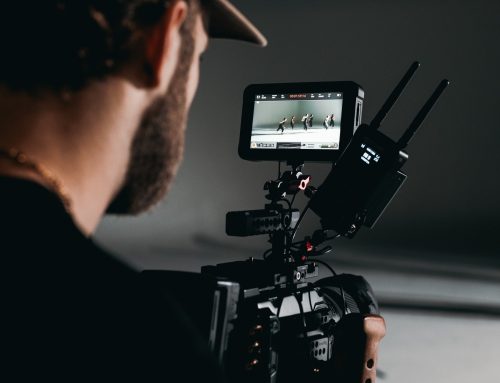The best way to preserve knowledge for future generations is to record lectures, webinars, tutorials, and speeches. Everywhere, including for professors to view their lessons, for students to brush up on their information, and for employers to display their business ventures, transcription is used. Zoom meeting transcription is a thing nowadays.
Students and professors benefit most from transcription since it makes it easier for them to go back and review lectures to identify any points that were missed, needed to be clarified, or were simply not covered. But the hardest part of studying is listening to records.
The analysis of many hours of recordings is a waste of time and creates additional substantial unsolvable problems if you only need to partially notate certain information. Additionally, this strategy does not ensure success.
As a result, we have compiled five straightforward suggestions for solving this issue fast and effectively. Let’s learn what academic transcription entails and why it is essential before we get into transcription techniques.
The Meaning And Significance Of Academic Transcription
The transformation of audio or video to text is known as academic transcription. In other words, academic transcription is converting an oral recording into written materials. This technique is used by teachers to write down ideas for upcoming scientific articles.
A wonderful tool for kids with disabilities is an academic transcription as well. For instance, a student with hearing difficulties can view the transcription the teacher has prepared without having their academic performance suffer.
To help students visualise knowledge, some teachers utilise transcription. Data is significantly more effectively perceived visually than auditorily. It is encouraging that so many teachers are aware of this and make an effort to pique their students’ interest in the subjects being covered in class.
This is especially true for distance learners because their homes can keep them from paying attention to lectures. Students can study the content in a peaceful environment by donning headphones and playing their favourite music.
Here are 7 great practices to follow so you can succeed in academia by making the most of your transcriptions:
1. Establish the interview’s parameters
You must concentrate on the interview method’s workflow if you want to streamline your transcription process. Although this advice applies to much more than just transcribing, keep in mind that the quality of your transcripts depends on the design of your research.
Even if you produce a trustworthy transcript of the audio recording, the transcript will be of little use to your research if the interview conversation lacks focus, insightful details, or a logical flow. Therefore, you must ensure that the research’s base is rock solid if you want to get the most out of your transcripts.
2. Effectively assign the transcription work
The painstaking process of transcription has a significant risk as well as high return (better context, knowledge, and insights) (a lot of time and energy spent). But you’d want to reduce the risk in a crowded setting like academia.
To do this, distributing the transcription job among your coworkers is a very successful strategy. Zoom meeting transcription can also be very helpful.
3. Give transcription enough of your time and attention
Although transcription is a small activity compared to your other assignments, it really aids your research. Therefore, it’s worthwhile to invest the necessary time and effort to execute it correctly.
Transcription is a talent that can be learned quickly, but it shouldn’t be rushed. If not, the transcripts that are produced will need more time to fix than to actually analyse. However, if you do it correctly, you’ll have access to priceless resources that can aid you in both your current research and any future academic attempts.
4. Listen to the audio only briefly before transcribing
Every audio recording has some flaws. It’s likely that the recording of the lecture or interview you have will contain problems that will make it challenging to transcribe. When you can push past them while transcribing, doing so may require extra time and effort to solve problems.
Additionally, depending on how complicated the problems are, you might not be able to solve them at all. You can be proactive and identify the audio difficulties in advance by scanning the audio first, rather than finding them out during the transcription process.
You may get a sense of the audio this way and note any problems you run into.
5. Efficiently proofread the finished transcript
You can start utilising your transcript as soon as you’re done, but should you? Most likely, the content contains some grammatical, spelling, or formatting problems. You can easily correct these errors and continue with your analysis. It’s still advisable to review your transcript before using it, though.
Of course, some people would rather not spend the extra time and effort checking their transcripts. If you leave the errors, though, it can end up taking more time and being more irritating in the long run.
Therefore, to ensure a more effective research procedure, it is best to proofread the transcript.
6. Produce several copies of the transcript
Consider your transcript to be a significant source of information. Of course, you’d want to safeguard it at all costs. Yes, transcripts are important study tools to some extent. After all, you required their assistance in your research.
However, you must take into account the time and effort it took you to complete them. The time invested in making your transcripts will be lost if you lose them (along with the critical insights you gained).
7. Transcript formatting for easier access
As was previously mentioned, your transcript may be very useful in the future. This is basically accurate, though, if it is written in a clear manner. Transcripts and other research materials need to be formatted for easier accessibility if you want to future-proof them.
Although academic transcription is difficult, you can expedite the process by adopting the tried-and-true techniques offered by EQ Transcription services. We’ve given you seven useful tips that will enable you to enhance your typing speed and accuracy while also producing transcripts of the highest calibre.
Making academic transcriptions on a regular basis will enhance your reputation and provide you with a chance to brush up on your vocabulary.






